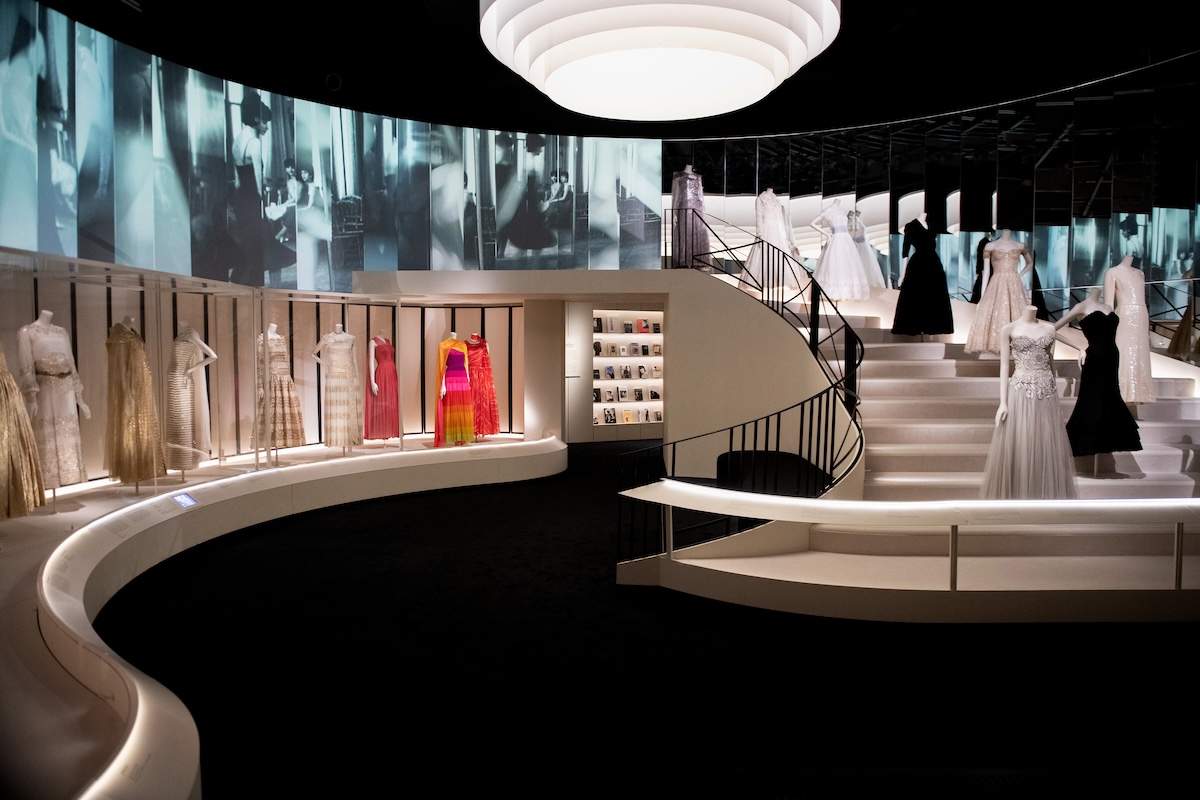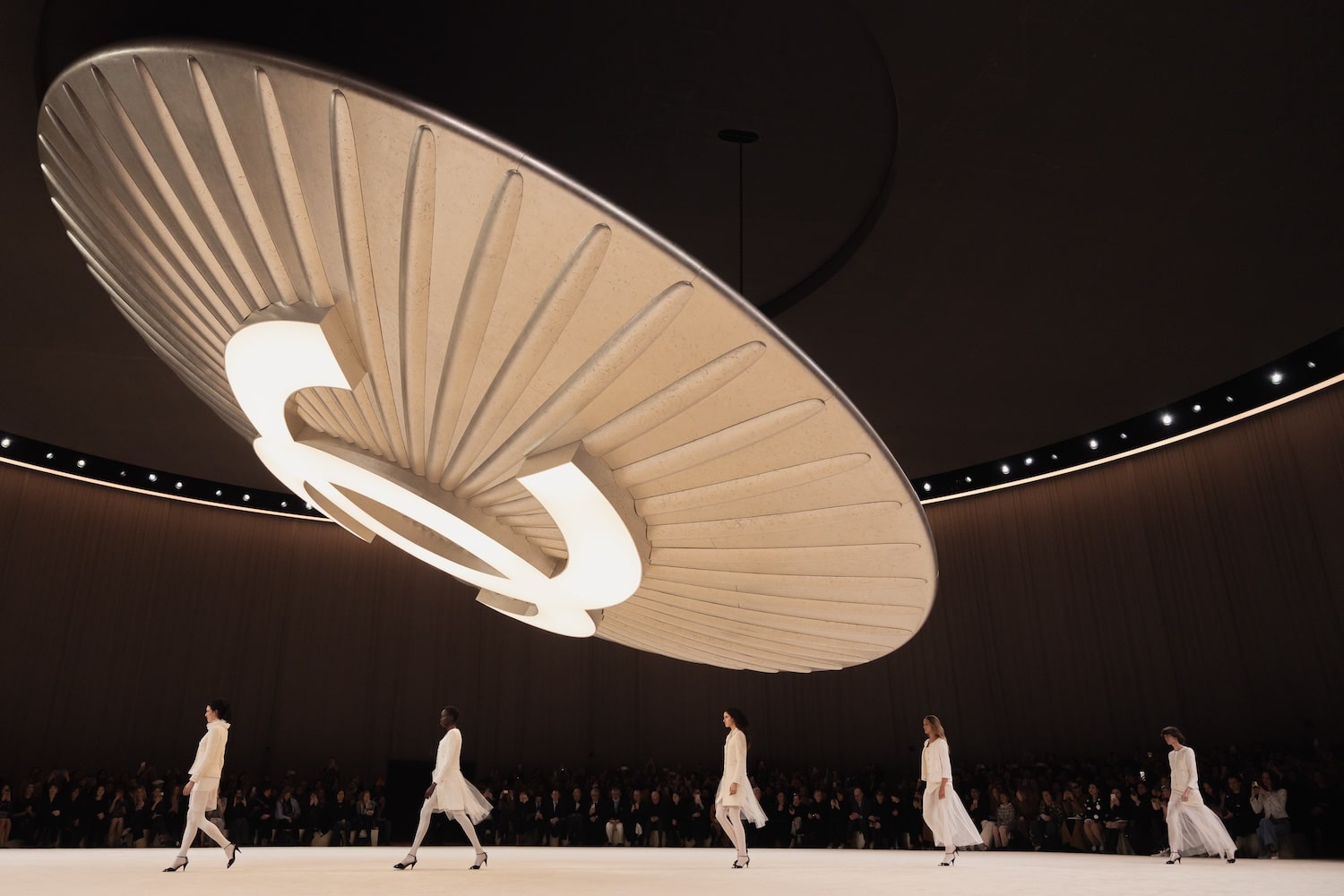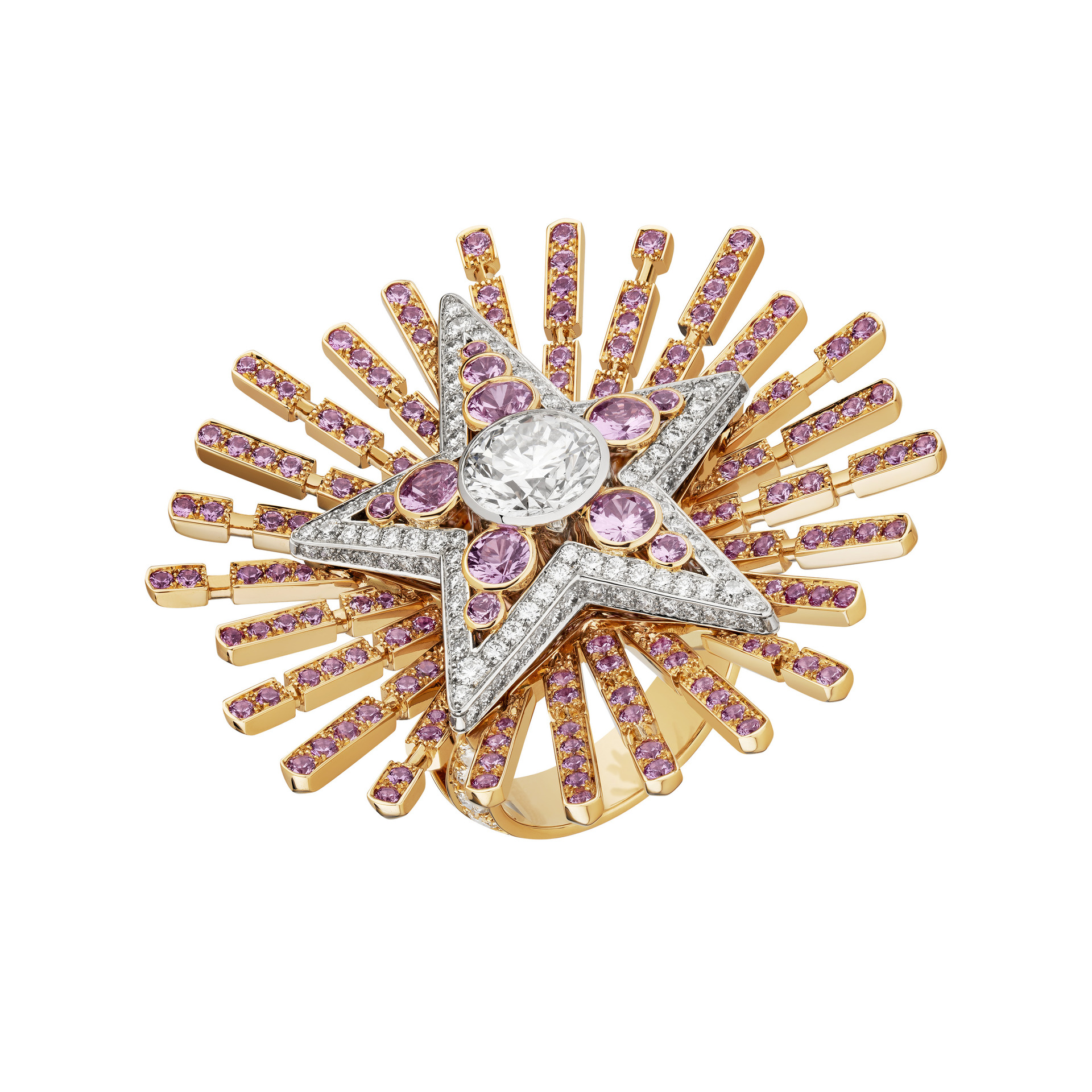Curator Oriole Cullen Presents the Comprehensive Show’s UK Debut
For the very first time in the United Kingdom, an exhibition dedicated to Gabrielle Chanel is open at the Victoria & Albert Museum (V&A) in London. Set within The Sainsbury Gallery, “Gabrielle Chanel. Fashion Manifesto” (September 16, 2023–February 25, 2024) is organized into 10 sections, guiding visitors through the many categories Chanel has gained acclaim for since its founding in 1910. In addition to nearly 200 looks, a selection of accessories, perfumes, and jewelry are also on view, illustrating the designer’s dedication to fashion and modern-day elegance.
Presented in partnership with Palais Galliera, Fashion Museum of the City of Paris, where a previous iteration was seen in 2021, the show is reimagined with more than100 new objects. To complement rarely seen collection pieces from the V&A, Palais Galliera, and the Patrimoine de Chanel—the heritage collections of the maison in Paris—are also exhibited. Highlights include one of the first garments produced in 1916, costumes for the Ballets Russes production of Le Train Bleu in 1924, ensembles from Chanel’s final collection in 1971, and Chanel’s British inspirations—from her adoption of tweed to partnerships with British textile companies.
The presentation’s curator, Oriole Cullen, curator of modern textiles and fashion at the V&A, shared with Whitewall the splendor in organizing a show of this scale.
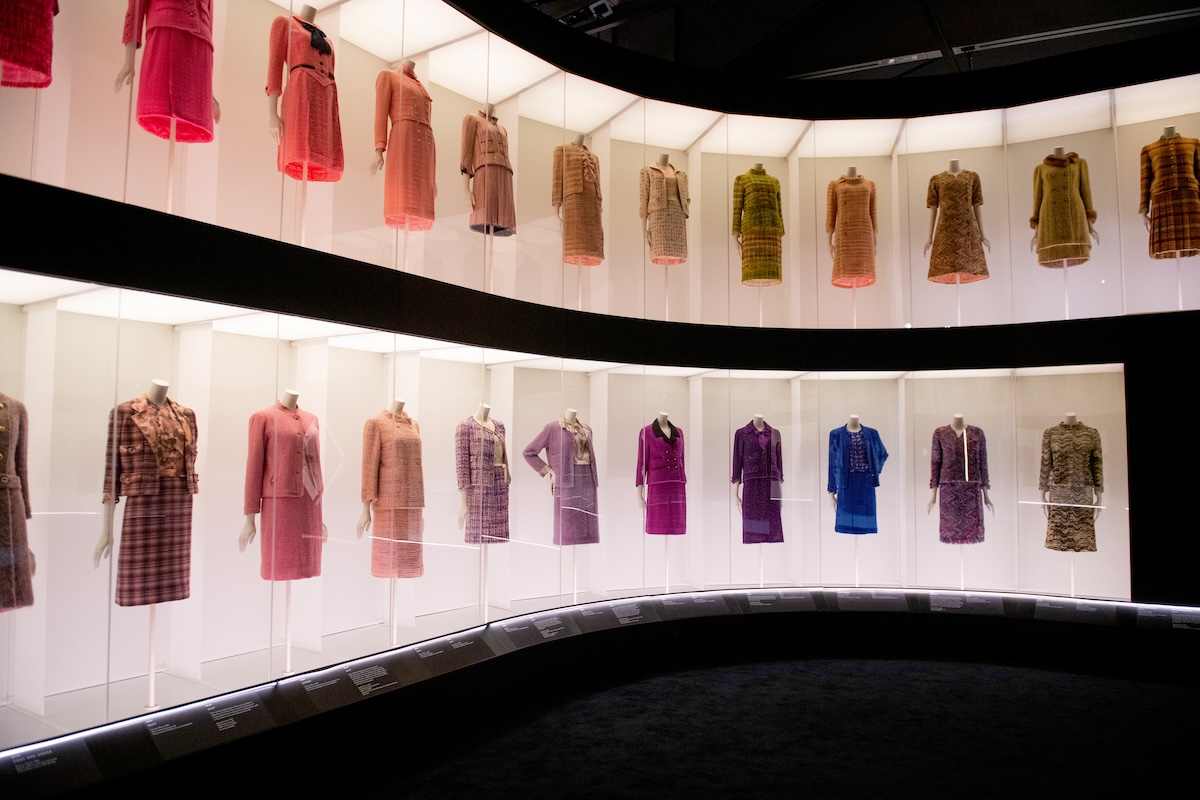
Installation view of “Gabrielle Chanel. Fashion Manifesto,” courtesy of Chanel.
WHITEWALL: How did presenting these in 10 themed vignettes highlight who Gabrielle Chanel was and is to the brand today?
ORIOLE CULLEN: We spend time seeking out objects in collections worldwide, examining and researching, and submersing ourselves into the research and material. From this, narratives appear, and we work on weaving them together and enabling the objects to tell a story.
The ten sections follow a chronology of Chanel’s 60-plus-year career, taking the visitor through the defining elements of Gabrielle Chanel’s “fashion manifesto”—her template for the modern woman’s wardrobe. Within these overarching themes, the objects represent crucial aspects of that distinctive Chanel style—some well-known, such as the little black dress and the Chanel suit, and some less widely recognized, such as her radical approach to textiles and her innovative construction techniques. At certain moments, we break out of the chronology to focus on a particular aspect of her work, showcasing the importance of accessories to the Chanel look; the iconic 2.55 handbag and two-tone shoes; the invisible accessory of Chanel No. 5, and the fragrance, beauty, and skincare collections; and her abundant and imaginative costume jewelry.
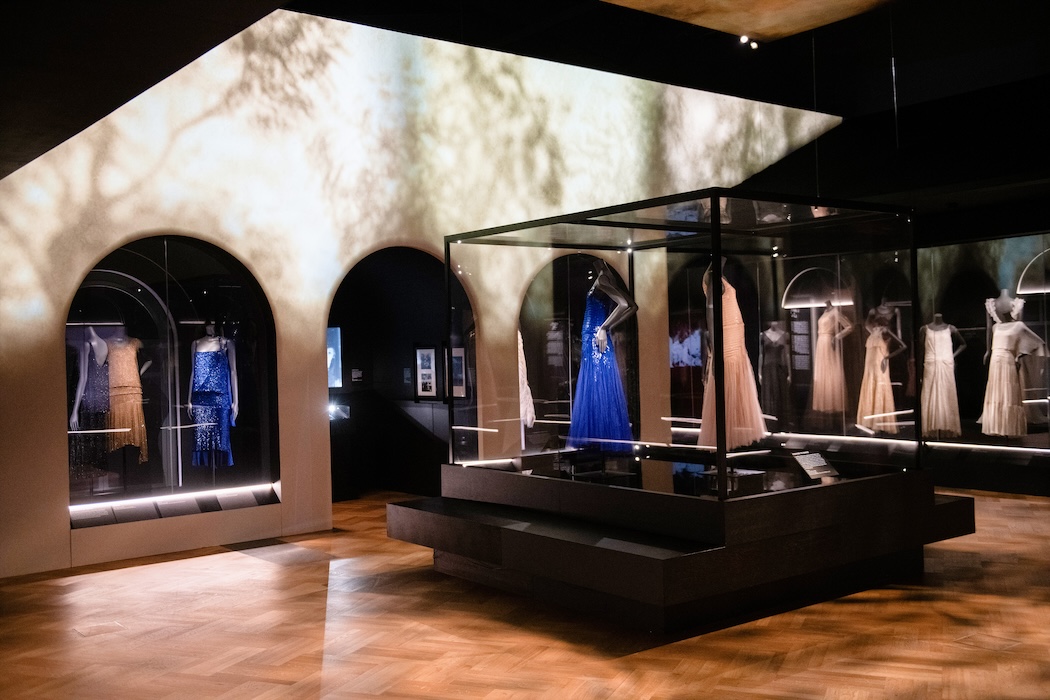
Installation view of “Gabrielle Chanel. Fashion Manifesto,” courtesy of Chanel.
Rare Garments and More Than 170 New Objects are Displayed
WW: The exhibition builds from a previous iteration. What is particularly unique?
OC: Over 170 new objects, a new exhibition design, AV and soundtrack, as well as added elements to the narrative, such as her connections to Britain. We have also added elements of biography to give a glimpse of the woman behind the fashion design. We have examples by Gabrielle Chanel in the V&A’s collection, and the exhibition offers the chance to showcase these alongside pieces borrowed from over 25 collections worldwide, covering the full span of her career, examining how Chanel shaped the modern woman’s wardrobe from her entry into fashion in 1910 to her final collection in 1971. It’s an opportunity to display several rare objects from early in her career, as well as many garments that have never been displayed in the U.K. before and which shed light on the elements of her fashion output that continue to influence the way we dress today.
WW: What is one key piece included from the V&A’s collection?
OC: An all-over sequined trouser suit from 1937. Intended to wear when entertaining at home, the suit consists of a blouse of silk chiffon with a ruffled lace collar that sits on a simple cropped jacket embroidered with shiny black sequins, paired with wide-leg trousers of the same all-over shimmering sequins. This particular suit was owned by fashion editor Diana Vreeland, a regular Chanel client in this period. The outfit is strikingly modern—a radical proposal at the time, managing to be both opulent and pared-back in that distinctive Chanel way. Another example from the V&A’s collection is an evening dress from Spring/Summer 1923 of black georgette decorated with an all-over embroidery design of gilt frisé thread and clear glass bugle beads, probably embroidered by the House of Kitmir—a Parisian embroidery house established by the Grand Duchess Maria Pavlovna Romanova of Russia.
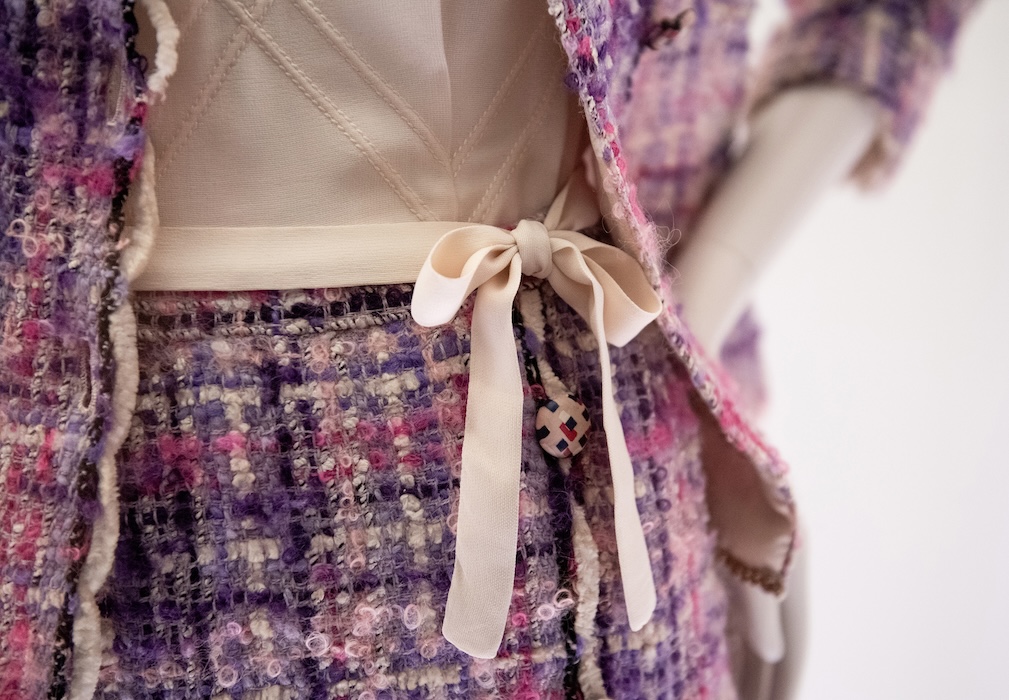
Installation view of “Gabrielle Chanel. Fashion Manifesto,” courtesy of Chanel.
Gabrielle Chanel’s Inspired Connection with British Society is Revealed
WW: How does the show further highlight the brand’s relationship with the U.K., and London in particular?
CO: At certain periods of her life, Gabrielle Chanel spent significant time in Britain—particularly in the 1920s and early 1930s. Her interest in Britain was first piqued through her relationship with British shipping merchant Arthur “Boy” Capel. Later, through her well-connected friend Vera Bate Lombardi, Chanel was introduced to British high society, including the Duke of Westminster, Winston Churchill, and the Duke of Windsor. In the exhibition, we touch on how her time in Britain and her connections to British society influenced her fashion designs.
For instance, her adoption of tweed wool textiles during the 1920s. At this time, she was spending much of her time with members of the British aristocracy, participating in country sports such as fishing. She took the practical protective fabrics she wore for these activities—such as tweeds and wool jerseys—and reinterpreted them into her elegant, couture daywear. We include objects from the archive of Linton Tweed, based in Carlisle in Northern England, who supplied Chanel from the 1920s onwards. For a limited period, Chanel opened a couture salon in London in 1927. We also discuss her partnerships with British textile manufacturers. In 1932, Chanel established British Chanel Ltd to work directly with U.K. textile manufacturers. To mark this partnership, she organized a fashion show of 130 designs made of British textiles, which took place at 39 Grosvenor Square in London. A film of this show is included in the exhibition, as well as a swatch book from the British textile manufacturers Ferguson Bros Ltd, one of the companies that Chanel partnered with, which features a design by Chanel. As well as Gabrielle Chanel’s personal and professional links to Britain, we also have some garments worn by British personalities, such as Anne Gunning, the top British model of the 1950s.
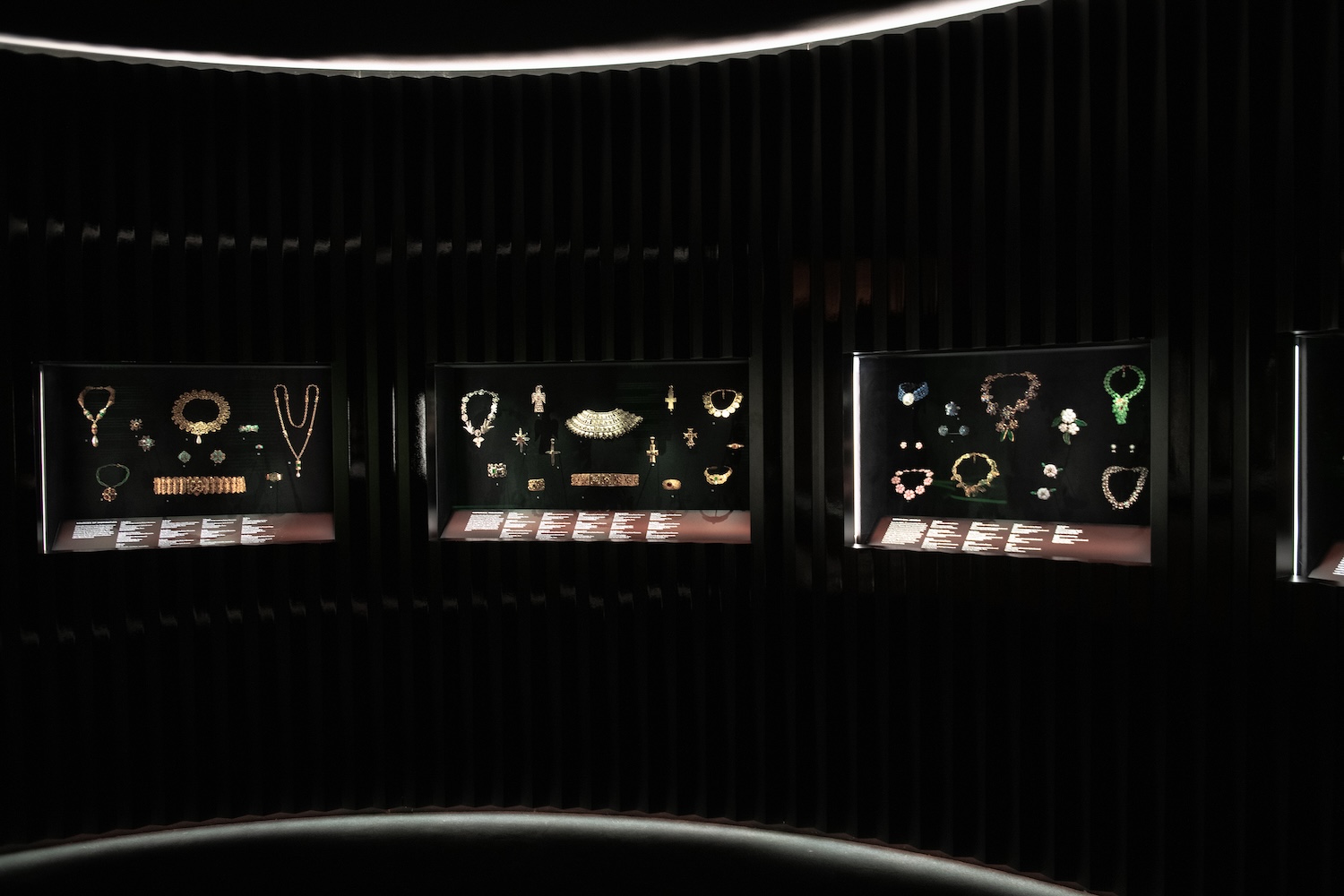
Installation view of “Gabrielle Chanel. Fashion Manifesto,” courtesy of Chanel.
The Natural Elegance of the historic Maison Prevails
WW: Chanel designed clothing first and foremost for herself, actualizing garments for an independent and active lifestyle. How do you see these styles speaking to the women visiting the exhibition today?
OC: As you say, Gabrielle Chanel designed first and foremost for herself. She was not designing a fantasy or an ideal; she was designing for her active life, for the life of a modern woman. Her designs are founded in a desire for comfort, ease, and wearability, and her success lay in her ability to create effortlessly elegant clothes that did not compromise on the wearer’s movement or comfort. Right up to the end of her career, she said she didn’t design clothes that she didn’t want to wear herself. Whilst the garments themselves might look strikingly simple and understated on the figure, the magic is in the detail: Every element was carefully thought out, every pattern piece perfected, in order to deliver on both style and wearability, and cultivate that sense of relaxed elegance that is so characteristic to Chanel. Importantly, she wasn’t only concerned with how the garments looked; she prioritized how they felt to wear. As we all know, if you feel good in your clothes, it gives you a certain attitude, confidence, and a natural elegance.



